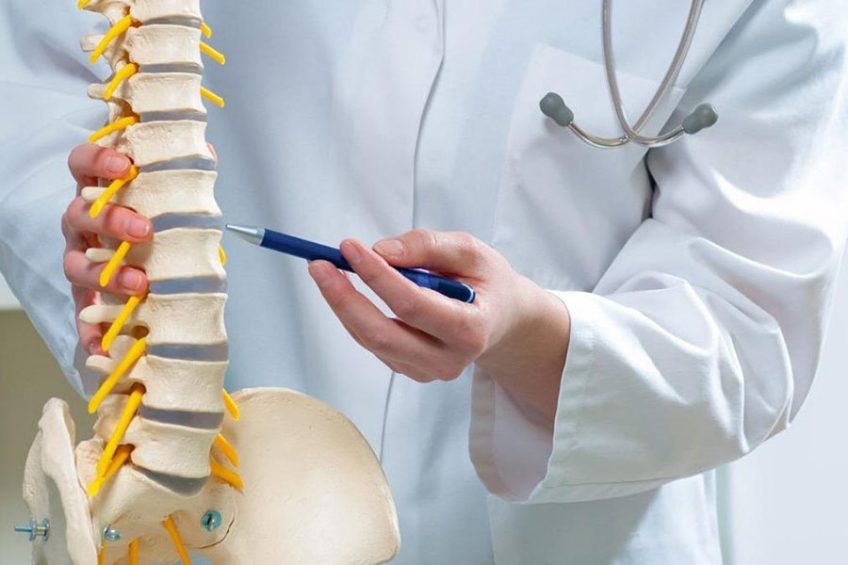Spinal stenosis is a degenerative condition of the spine characterized by narrowing of the spinal canal through which the spinal cord and spinal nerves pass. Narrowing of the canal compresses the spinal nerves and spinal cord into cervical and thoracic area and only the spinal nerves in the lumbar area, because the spinal cord ends in normally at the level of the L1 vertebra. Canal stenosis can be most commonly seen in the lumbar area and cervical.
Spinal stenosis is caused by degenerative changes, wear and tear. In severe cases of stenosis, intervention surgery may be recommended.
The spinal canal is located in the spinal cord and is the one that protects the spinal cord. The wall of the spinal canal consists of several structures: the vertebral discs, the intervertebral joints, the flavum ligament, which stabilizes the spine in length.
The three main types of spinal stenosis are:
– cervical stenosis – narrowing of the spinal canal at the neck;
– lumbar stenosis – narrowing of the lumbar spinal canal, the space inside the lower part of the spine that transports the nerves to the legs;
– thoracic stenosis – this is rare and affects the middle / upper part of the spine.
CONTENT:
Causes
With age, natural degenerative processes occur throughout the body. Osteoarthritis is the most common cause of spinal stenosis, causing the formation of bone spurs that can grow in the spinal canal, compressing the nerves.
Other causes may include:
– disc herniations – soft discs located between the vertebrae that act as shock absorbers tend to dry out with age; cracks on the outside of a disc can allow some of the soft inner material to escape and press on the spinal cord or nerves;
– spinal injuries – car accidents and other traumas can cause dislocations or fractures of one or more vertebrae; displaced bones from a fracture of the spine can damage the contents of the spinal canal;
– tumors – abnormal growths can form inside the spinal cord, in the membranes that cover the spinal cord or in the space between the spinal cord and vertebrae; these are less common and can be identified on spinal imaging;
– Paget’s disease – a condition in which the bones grow abnormally large and fragile, the result being a narrowing of the spinal canal.
Symptoms
There may be people who do not show symptoms, the presence of spinal stenosis being highlighted on an MRI scan or a computed tomography. When they occur, they often begin gradually and worsen over time. Symptoms vary depending on the location of the stenosis and the nerves that are affected.
In the case of cervical stenosis:
– numbness or tingling in the hand, arm, foot or sole;
– weakness in the hand, arm or leg;
– problems with walking and balance;
– sore throat;
– in severe cases, loss of sphincter control and urinary incontinence.
In case of lumbar stenosis:
– numbness or tingling in the legs, back or buttocks;
– pain or cramps in one or both legs when standing for long periods of time or when moving, pain that decreases in intensity when you sit or lean forward;
– loss of control in the arms or legs which can lead to gait or holding objects;
– back pain.
Treatment
Therapy for spinal stenosis begins with conservative measures, similar to disc herniation: medical gymnastics, anti-inflammatory drugs, possibly cortisone injections into the spinal canal. In addition, you can opt for certain corsets that support maintaining the spine in a certain position to avoid applying pressure on the spinal canal and nerves.
If these measures do not significantly improve the symptoms of spinal stenosis, surgery is required. Depending on the severity of the symptoms, minimally invasive interventions and classic operations are possible. In the case of minimally invasive interventions, following spinal anesthesia, spacer devices are installed that extend the spinal canal and stretch the spine. Given that this procedure is relatively new, long-term results are not yet available.
Surgery: good long-term results
Usually, decompression of nerve roots is necessary to treat spinal stenosis. In the past, the common procedure consisted of a complete laminectomy, which consisted of resection of the vertebral apophyses: therefore not only the thickened yellow ligament, but also the bony protuberances of the joints, the spinous processes and the vertebral joints.
The problematic aspect is the subsequent instability that often results in spondylolisthesis and other discomforts that required additional stabilization (spondylodesis).
For this reason, currently, spinal stenosis surgery maintains the spinous processes and small vertebrae and only the bony protuberances and the thickened flavum ligament are removed. Subsequent stabilization procedures are necessary only in situations where larger bone segments are removed. The beneficial effects are felt in the long run, and patients are relieved for years of specific pain.


